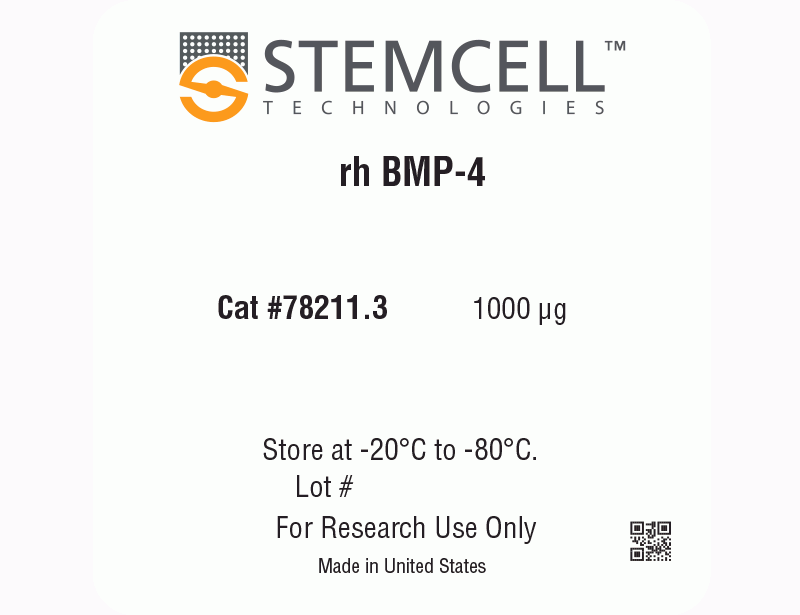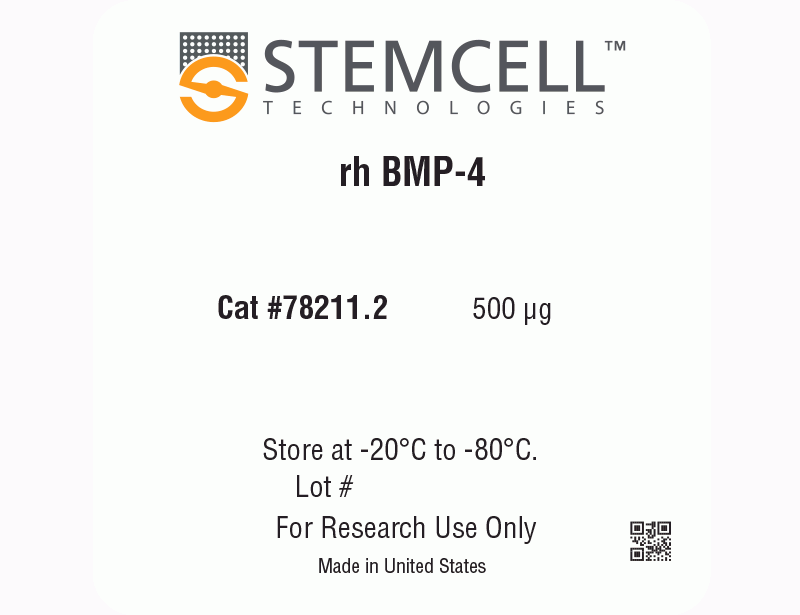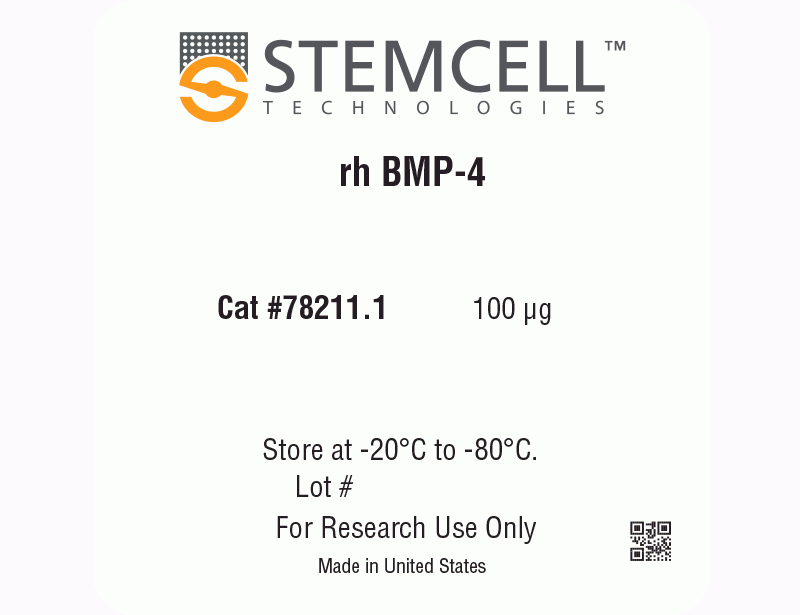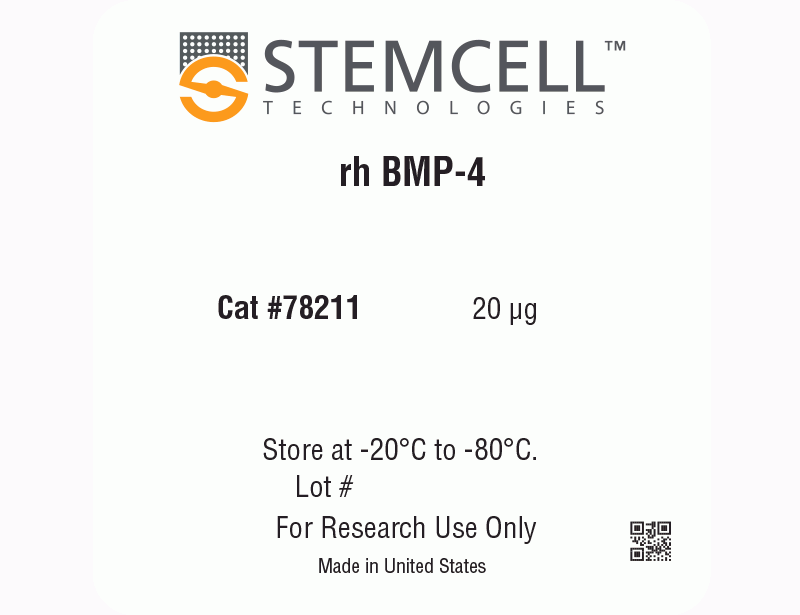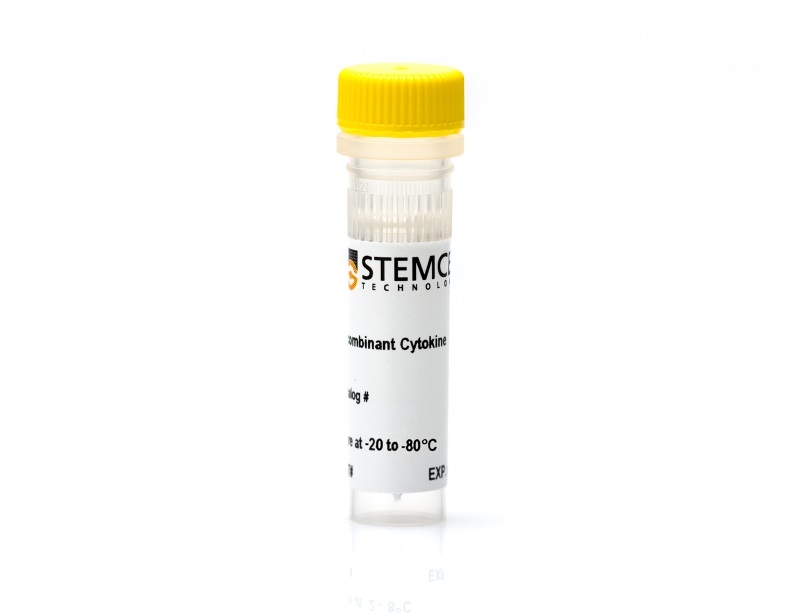Human Recombinant BMP-4
Bone morphogenetic protein 4
概要
Bone morphogenetic protein 4 (BMP-4) is a member of the highly conserved transforming growth factor β (TGF-β) superfamily. Mature BMP-4 is a disulfide-linked homodimeric protein consisting of two 116-amino-acid residue subunits, and is generated by the proteolytic removal of the signal peptide and propeptides (Xiao et al.). BMP-4 binds to type I and type II receptors on cells. This binding results in the phosphorylation of receptor 1, which in turn results in the phosphorylation of Smad proteins, which then go on to act as transcription factors (Zhang et al.). BMPs have been shown to be key regulators of embryogenesis and are known to play a role in the growth and differentiation of various cell types, including embryonic stem (ES) cells, induced pluripotent stem (iPS) cells, mesenchymal cells, epithelial cells, hematopoietic cells, and neuronal cells (Chadwick et al.; Graham et al.; Jones et al.; Lengerke et al.; Zhang et al.).
Subtype
Cytokines
Alternative Names
BMP-2B, BMP2B1, MCOPS6, OFC11, ZYME
Cell Type
Endoderm, PSC-Derived, Hematopoietic Stem and Progenitor Cells, Mesoderm, PSC-Derived, Pluripotent Stem Cells
Species
Human
Area of Interest
Cancer Research, Epithelial Cell Biology, Stem Cell Biology
Molecular Weight
13.1 kDa monomer; 26.2 kDa dimer
Purity
≥ 95%
技术资料
| Document Type | 产品名称 | Catalog # | Lot # | 语言 |
|---|---|---|---|---|
| Product Information Sheet | Human Recombinant BMP-4 | 78211, 78211.1, 78211.2, 78211.3 | All | English |
| Safety Data Sheet | Human Recombinant BMP-4 | 78211, 78211.1, 78211.2, 78211.3 | All | English |
数据及文献
Data
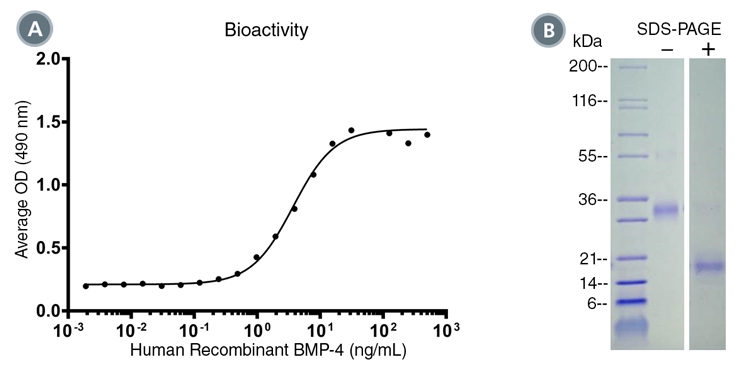
(A) The biological activity of Human Recombinant BMP-4 was tested by its ability to induce alkaline phosphatase production in ATDC-5 cells. Alkaline phosphatase production was measured using a fluorometric assay method. The EC50 is defined as the effective concentration of the growth factor at which alkaline phosphatase activity is at 50% of maximum. The EC50 in the above example is 3.99 ng/mL. (B) Human Recombinant BMP-4 was resolved with SDS-PAGE under reducing (+) conditions and non-reducing (-) conditions and visualized by Coomassie Blue staining. The predicted molecular mass is 13.1 kDa (monomer) or 26.2 kDa (dimer), but these migrate to an apparent molecular mass of 20 kDa or 34 kDa, respectively, due to variable glycosylation.

